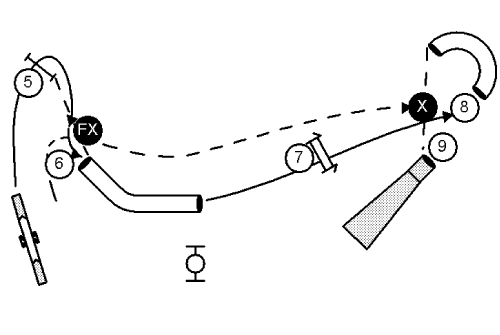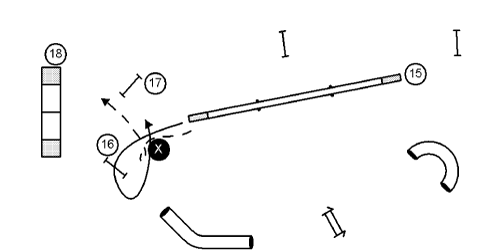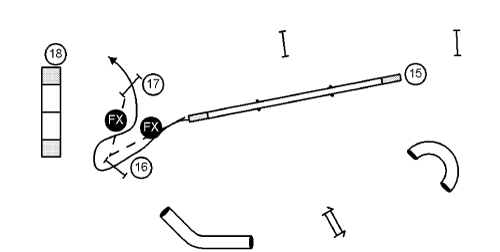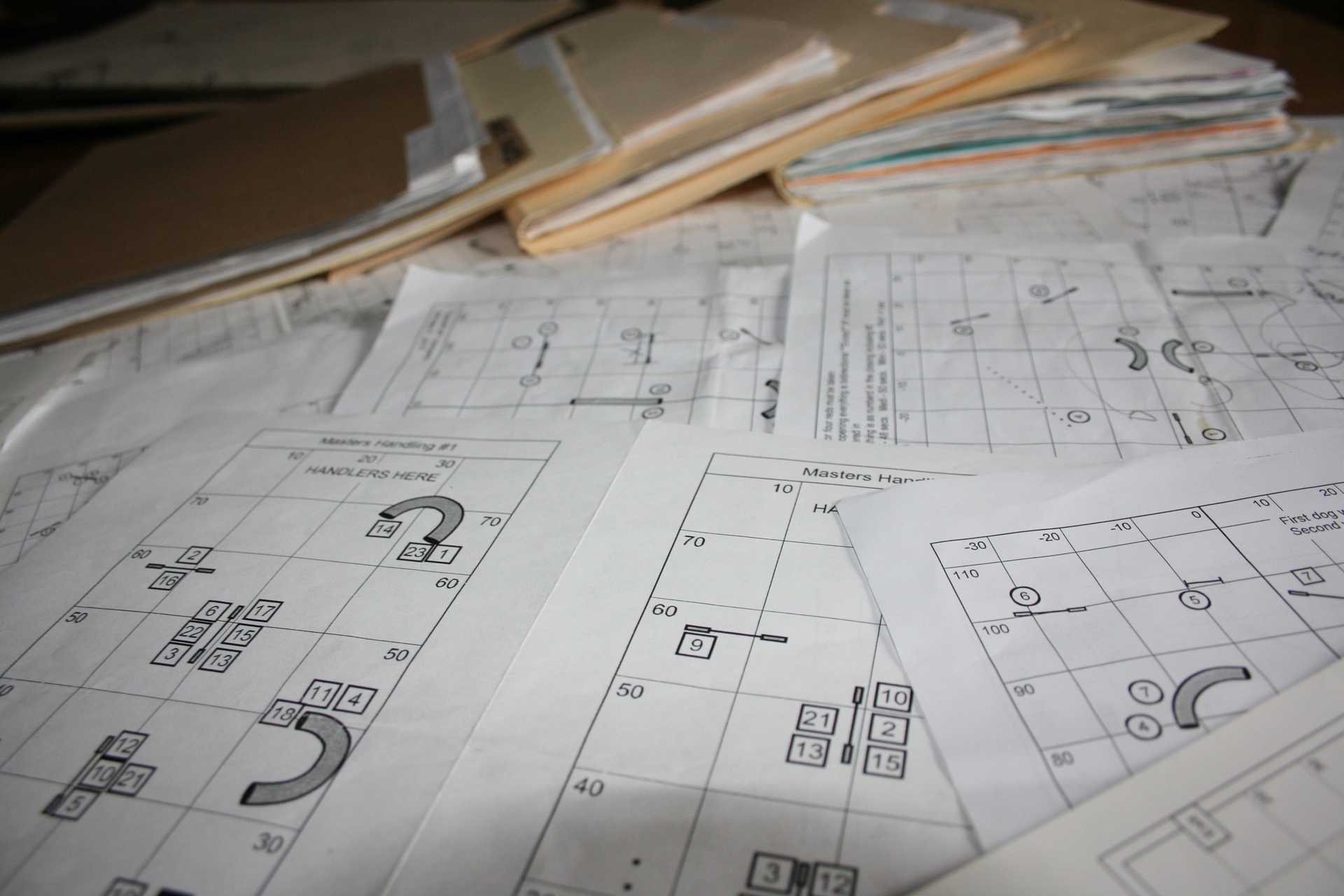Layering Practice
25 Jun 2005
I got some outdoor ring rental in West Chicago, IL at Candy’s Starstream 200 this past Saturday. I worked on some of the issues Milo and I have been facing lately ( car_dun_al_2005_06_18, cream_city_2005_06, and fundogs_2005_06_11) Since there was already equipment setup I also dreampt up a course by moving some jumps around. It let me work on running with Milo over long distances through a jump chute, a long run to the weaves (which he hit perfectly each time), and I ended up working on layering a little bit too. It has a nasty (I would imagine illegal?) A-Frame approach too.

The opening is a straightforward Serpentine Serpentine Handling TechniquesSerpentine Sequence. I used a Lateral Lead Out to right before jump 2 and called Milo to my extended left arm and move forward through the teeter. Since I was working my contacts I was baby-sitting Milo at the downside of the teeter. So my only choice on jump 5 was to short stride the approach and try to pre-cue the Front Cross Learning the Front Cross - VideoFront Cross so Milo wouldn’t take a long stride as though going for the Dog Walk. To keep his line to the tunnel tight I made sure I was on the Handler Line Using the Handler Line - Front/Rear/Blind Cross LineHandler Line - Front/Rear/Blind Cross Line to the tunnel. It worked nicely and is shown below:

The right side tunnel entrance turned out to not be a problem. I made sure I was ahead of Milo as he came out of the tunnel. I was even with him before the double and ran directly for the right side of the tunnel - I don’t think he even saw the wrong side tunnel entrance. Another option might be to Rear Cross Learning the Rear CrossRear Cross the double (as Dana and Jen pointed out you should be able to Rear Cross every obstacle!).
So as Milo entered the tunnel I was right where I needed to be - again on the Handler Line, clearly indicating a tight line to the next obstacle, the chute, as shown by the “X”. Here is where the first layering opportunity presented itself:

Once Milo was in the chute I just needed to get where I could direct him into the tire. I just pushed a little on his line so he knew I really meant the tire and not the tunnel. Once he was committed I could easily support his line while running for jump 11. This is also a classic training method for helping a dog work at a lateral distance
- using the tunnel to separate the dog from the handler.

As shown above the slice over jump 12 was a little ugly, but just required supporting Milo’s line long enough before cutting to run down the opposite side of the dog walk. The only difficulty I had was having Milo overrun jump 14. I was really in a foot race with him to get to the upside of the dog walk (which in retrospect I didn’t really need to do - he would take the dog walk with me working at quite a distance and there is no other obvious obstacle around…). So before the point marked “SD” (Slow Down) I should have been slowing to queue him to short stride the jump and prepare to turn. It took a couple tries to get a good turn - he also got to work on collecting appropriately for the oddly spaced jumps.

In the diagram above I show one approach for handling the two jumps after the dog walk. At point “X” I used a Post Turn Learning the Post TurnPost Turn/Shoulder Pull/Pivot Turn and slide in behind Milo as he turned to his left over the jump and then continued pulling him around the jump standard. Then I moved forward towards jump 17. This was a little tricky because if I went too deep too fast there is the potential for him back jumping jump 16.
Another approach would be to Post Turn and stay near the “X” spot and then Rear Cross behind jump 17. Finally, you could also turn the dog to the right coming over jump 16, as shown below. I didn’t like this approach as much - but you could use a Front Cross to get ahead of the dog and then Front Cross again to turn them and get them over jump 17.

Either way you need to take a few extra steps to give the dog a decent turn and run up distance to the A Frame. I don’t think this A Frame approach would be allowed in any real venues.
The long run to the weave poles was just so I could work Milo on this training issue. I played around with changing the weave pole angles to work onside and offside approaches. But for a more realistic course you should move the weaves 10 feet closer to the A Frame. The close from the table is just another Serpentine sequence.
Let me know if you try this course and how it runs for you.
If you enjoyed this article won't you please:  Thanks!
Thanks!
Related Tags
Related Articles:
- Practice Standard Course Built Around A Jump Chute
- Practice Course - Discriminations And More
- Some Fun Challenges to Practice
- Practice Course - Serpentines, Threadles, Weave Entries and Contacts
- AKC-like JWW/Premier Novice through Masters Practice Courses
- Fun AKC-like JWW Novice/Advanced Practice Courses
